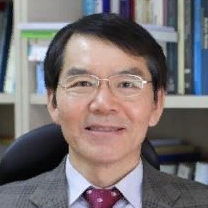
Oksam Chae
Work place: Dept. of Computer Science and Engineering, Kyung Hee University (Global Campus), Giheung-gu, Yongin-si, Gyeonggi-do, 17104, South Korea
E-mail: oschae@khu.ac.kr
Website:
Research Interests: Multimedia Information System, Medical Image Computing, Image Processing, Image Manipulation, Image Compression, Computer systems and computational processes, Medical Informatics
Biography
Oksam Chae (M92) received the B.Sc. degree in electronics engineering from Inha University, Incheon, South Korea, in 1977, and the M.S. and Ph.D. degrees in electrical and computer engineering from Oklahoma State University, Stillwater, in 1982 and 1986, respectively. He was a Research Engineer with Texas Instruments Image Processing Laboratory, Dallas, TX, from 1986 to 1988. Since 1988, he has been a Professor with the Department of Computer Engineering, KyungHee University, Gyeonggido, South Korea. His current research interests include multimedia data processing environments, intrusion detection systems, sensor networks, and medical image processing in dentistry. Prof. Chae is a member of the SPIE, Korean Electronic Society (KES), and the Institute of Electronics, Information and Communication Engineers.
Author Articles
Mining Wrinkle-Patterns with Local Edge-Prototypic Pattern (LEPP) Descriptor for the Recognition of Human Age-groups
By Md Tauhid Bin Iqbal Oksam Chae
DOI: https://doi.org/10.5815/ijigsp.2018.07.01, Pub. Date: 8 Jul. 2018
Human age recognition from face image relies highly on a reasonable aging description. Considering the disparate and complex face-aging variation of each person, aging description needs to be defined carefully with detailed local information. However, aging description relies highly on the appropriate definition of different aging-affiliated textures. Wrinkles are considered as the most discernible textures in this regard owing to their significant visual appearance in human aging. Most of the existing image-descriptors, however, fail short to preserve diverse variations of wrinkles, such as a) characterizing stronger and smoother wrinkles, appropriately, b) distinguishing wrinkles from non-wrinkle patterns, and c) characterizing the proper texture-structures of the pixels belonging to the same wrinkle. In this paper, we address these issues by presenting a new local descriptor, Local Edge-Prototypic Pattern (LEPP) with the notion that LEPP preserves different variations of wrinkle-patterns appropriately in representing the aging description. In the coding, LEPP sets prototypic restrictions for each neighboring pixel using their relation with center pixel when they belong to an inlying-edge, and utilize such restrictions, afterwards, to prioritize specific neighbors showing significant edge-signature. This strategy appropriately encodes the inlying edge structure of aging-affiliated textures and simultaneously, avoids featureless texture. We visualize the stability of LEPP in terms of its robustness under noise. Our experiments show that LEPP preserves discernible aging variations yielding better accuracies than the state-of-the-art methods in popular age-group datasets.
[...] Read more.Other Articles
Subscribe to receive issue release notifications and newsletters from MECS Press journals